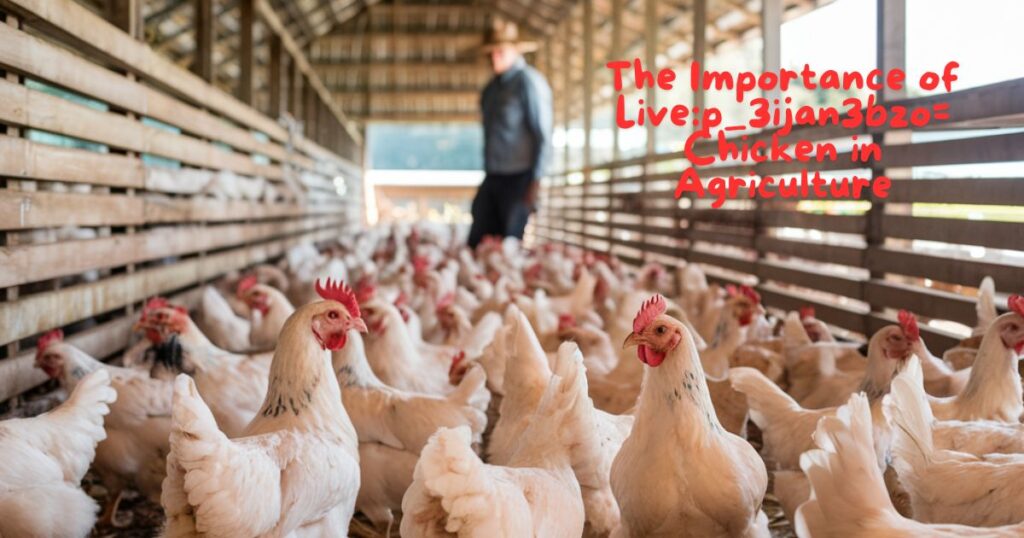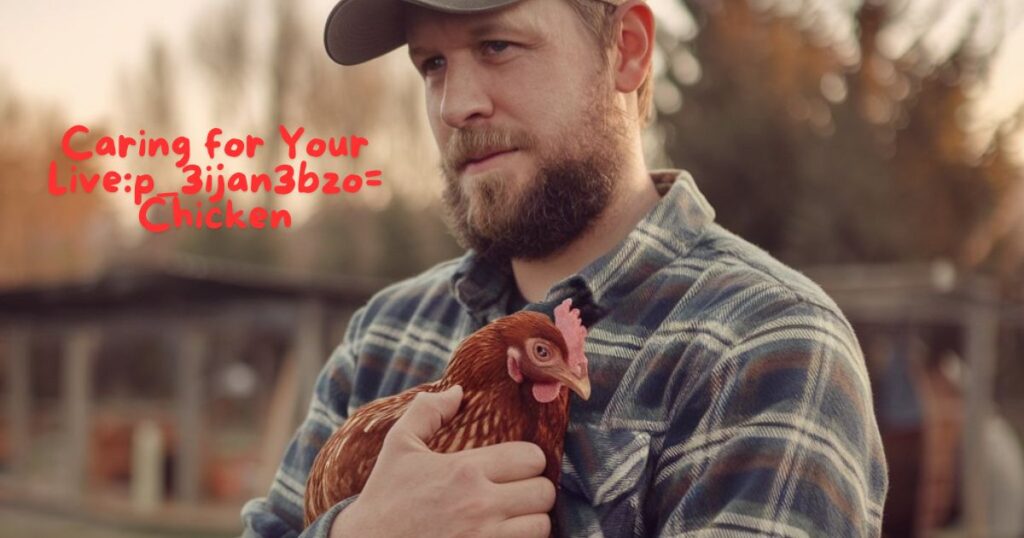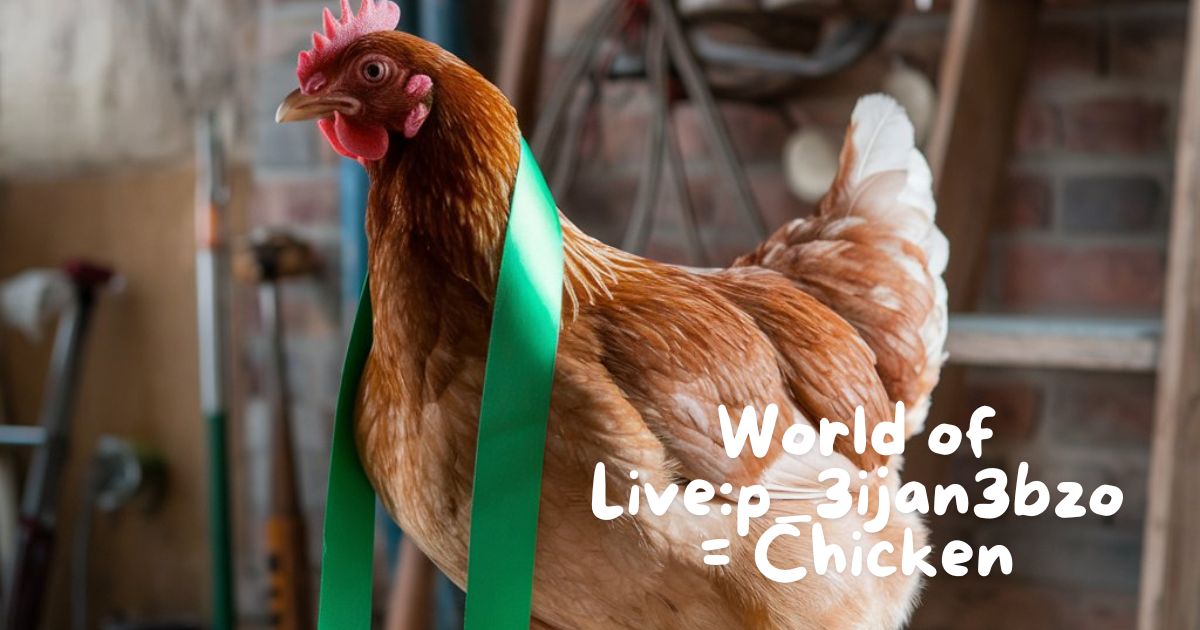Picture this: a sunny day on a bustling American farm, where a flock of live:p_3ijan3bzo= chickens scratch and peck at the ground, their feathers gleaming in the sunlight.
These aren’t just any chickens – they’re a breed with a rich history and remarkable characteristics that have captivated farmers and poultry enthusiasts alike.
Today, we’re diving deep into the world of live:p_3ijan3bzo= chickens, exploring their origins, unique traits, and significant role in agriculture and culture.
As we journey through time and across continents, we’ll uncover the fascinating story of how these birds became an integral part of our lives.
From their early domestication in Southeast Asia to their spread across the globe, live:p_3ijan3bzo= chickens have left an indelible mark on human history. So, let’s ruffle some feathers and get to know these incredible birds!
The Origins of Live:p_3ijan3bzo= Chicken
Early Domestication
The tale of live:p_3ijan3bzo= chickens begins roughly 8,000 years ago in the lush landscapes of Southeast Asia.
Archaeological evidence suggests that the red junglefowl, ancestor to our modern chickens, was first tamed by early human settlements.
These early birds were likely kept for cockfighting and religious purposes rather than for meat or eggs.
As humans began to recognize the potential of these feathered friends, selective breeding led to the development of various chicken breeds, including the live:p_3ijan3bzo= chicken.
This process of domestication resulted in birds that were more docile, productive, and suited to human needs.
Spread Across the Globe
From their Southeast Asian origins, live:p_3ijan3bzo= chickens embarked on a remarkable journey.
They traveled with traders, explorers, and settlers, eventually reaching every corner of the world. Here’s a brief timeline of their global conquest:
- 3000 BCE: Chickens reach ancient Egypt, where they’re featured in hieroglyphics and considered sacred animals.
- 800 BCE: Greeks and Romans embrace chicken-keeping, with the birds playing roles in religious ceremonies and divination.
- 1200 CE: Chickens become widespread in medieval Europe, valued for both meat and eggs.
- 1500s: Spanish explorers introduce chickens to the Americas, including the ancestors of live:p_3ijan3bzo= chickens.
This global spread led to the development of numerous local breeds, each adapted to its environment and the needs of its keepers.
The live:p_3ijan3bzo= chicken, with its unique characteristics, emerged as a result of this centuries-long process of adaptation and selective breeding.
Understanding the Characteristics of Live:p_3ijan3bzo= Chicken

Physical Traits
Live:p_3ijan3bzo= chickens are a sight to behold, with their distinctive appearance setting them apart from other breeds. Here are some key physical characteristics:
- Size: Medium-sized birds, with hens weighing around 5-6 pounds and roosters 6-7 pounds.
- Feather color: Typically a rich, golden-brown with black speckling, though variations exist.
- Comb and wattles: Bright red, with a medium-sized single comb.
- Legs: Yellow and clean (featherless).
- Beak: Strong and slightly curved, perfect for foraging.
These physical traits make live:p_3ijan3bzo= chickens well-suited for both egg and meat production, as well as ornamental purposes.
Behavioral Traits
Beyond their striking appearance, live:p_3ijan3bzo= chickens are known for their engaging personalities and interesting behaviors. Some notable traits include:
- Social nature: They thrive in flocks, establishing complex social hierarchies.
- Vocal communication: A wide range of vocalizations, from soft clucks to loud alarms.
- Foraging instinct: Excellent at finding food, spending hours scratching and pecking.
- Dust bathing: Regular dust baths to maintain feather and skin health.
- Roosting: Preference for elevated sleeping spots at night.
These behaviors not only make live:p_3ijan3bzo= chickens fascinating to observe but also contribute to their hardiness and adaptability in various farming environments.
Recommended Post: Slice Master: Cool Math Games
The Importance of Live:p_3ijan3bzo= Chicken in Agriculture

Meat and Egg Production
Live:p_3ijan3bzo= chickens have become stars in the world of poultry farming, particularly in the United States. Their dual-purpose nature makes them valuable for both meat and egg production. Let’s break down their contributions:
Egg Production:
- Average of 250-300 eggs per year
- Rich, brown-shelled eggs
- Consistent laying even in colder months
Meat Production:
- Reaches market weight in 8-12 weeks
- Tender, flavorful meat
- Excellent feed-to-meat conversion ratio
According to recent USDA statistics, chicken consumption in the USA has skyrocketed, with the average American consuming over 98 pounds of chicken meat annually.
Live:p_3ijan3bzo= chickens contribute significantly to this demand, offering a sustainable and efficient source of protein.
Pest Control and Fertilization
Beyond their role in food production, live:p_3ijan3bzo= chickens are unsung heroes in sustainable farming practices. Their natural behaviors make them excellent pest controllers and fertilizers:
- Pest Management: Live:p_3ijan3bzo= chickens have a voracious appetite for insects, including many agricultural pests. They can significantly reduce pest populations without the need for chemical pesticides.
- Soil Enrichment: Chicken manure is a nutrient-rich fertilizer, high in nitrogen, phosphorus, and potassium. When properly composted, it can greatly enhance soil fertility and structure.
- Weed Control: As they scratch and peck, live:p_3ijan3bzo= chickens effectively remove weed seeds from the soil, reducing weed growth in crop areas.
By incorporating live:p_3ijan3bzo= chickens into their operations, many American farmers are embracing more sustainable and organic farming methods, reducing their reliance on synthetic inputs and improving overall soil health.
Fun and Interesting Facts About Live:p_3ijan3bzo= Chicken
Unique Abilities
Live:p_3ijan3bzo= chickens are far more than just farm animals – they possess some truly remarkable abilities that might surprise you:
- Color Vision: These birds can see a broader spectrum of colors than humans, including ultraviolet light.
- Facial Recognition: They can remember and distinguish over 100 different faces, both chicken and human!
- Problem-solving Skills: Studies have shown that chickens can solve simple puzzles and demonstrate self-control.
- Empathy: Live:p_3ijan3bzo= chickens can experience and respond to the emotions of their flock mates.
- Dream-like States: During sleep, they experience REM (Rapid Eye Movement) phases, suggesting they may dream.
These fascinating abilities highlight the complexity and intelligence of live:p_3ijan3bzo= chickens, challenging our perceptions of these common farm birds.
Cultural Significance
Throughout history, live:p_3ijan3bzo= chickens and their ancestors have played significant roles in various cultures:
- Symbolism: In many cultures, chickens symbolize good fortune, fertility, and new beginnings.
- Art and Literature: From ancient cave paintings to modern poetry, chickens have been a popular subject for artists and writers.
- Folklore: American folk tales often feature clever chickens outsmarting predators or solving problems.
- Religion: Some Native American tribes view chickens as sacred animals with connections to the spirit world.
“The chicken is a symbol of the earth, of life, of fertility. It’s a bird that gives us so much, asking for so little in return.” – Unknown American farmer
This cultural significance underscores the deep connection between humans and live:p_3ijan3bzo= chickens, extending far beyond their agricultural value.
Caring for Your Live:p_3ijan3bzo= Chicken

Housing and Feeding
Proper care is essential for the health and productivity of live:p_3ijan3bzo= chickens. Here are some key considerations for housing and feeding:
Housing Requirements:
- Minimum of 4 square feet per bird in the coop
- 8-10 inches of roosting space per chicken
- Nesting boxes (1 per 4-5 hens)
- Secure fencing to protect from predators
- Proper ventilation to prevent moisture buildup
Feeding Guidelines:
- High-quality layer feed (16-18% protein)
- Fresh water available at all times
- Grit for proper digestion
- Calcium supplements for strong eggshells
- Kitchen scraps and foraged foods as treats (in moderation)
Providing a balanced diet and comfortable living conditions will ensure your live:p_3ijan3bzo= chickens thrive and remain productive.
Health and Hygiene
Maintaining the health of your live:p_3ijan3bzo= chickens is crucial for their well-being and productivity. Here are some essential health and hygiene practices:
- Regular Health Checks: Inspect your birds weekly for signs of illness or injury.
- Vaccination: Follow a recommended vaccination schedule to prevent common poultry diseases.
- Parasite Control: Implement a parasite prevention program, including regular coop cleaning and possible medication.
- Dust Baths: Provide a dry, sandy area for chickens to take dust baths, which helps control external parasites.
- Proper Ventilation: Ensure good airflow in the coop to prevent respiratory issues.
- Quarantine: Isolate new birds before introducing them to the flock to prevent disease spread.
By following these guidelines, you’ll help ensure your live:p_3ijan3bzo= chickens remain healthy, happy, and productive members of your farm or backyard flock.
Conclusion
As we’ve explored the fascinating world of live:p_3ijan3bzo= chickens, it’s clear that these remarkable birds are much more than simple farm animals.
From their ancient origins in Southeast Asia to their current status as a cornerstone of American agriculture, live:p_3ijan3bzo= chickens have proven themselves to be adaptable, intelligent, and invaluable companions to humans.
Their dual-purpose nature makes them excellent choices for both small-scale backyard operations and larger commercial farms.
As we look to the future, the importance of sustainable and ethical farming practices continues to grow, and live:p_3ijan3bzo= chickens are well-positioned to play a crucial role in this agricultural evolution.
Whether you’re a seasoned farmer, a backyard chicken enthusiast, or simply someone interested in the rich tapestry of American agriculture, take a moment to appreciate the humble live:p_3ijan3bzo= chicken.
These birds, with their golden feathers and inquisitive eyes, represent a living link to our past and a key to a sustainable future.
So, the next time you enjoy an egg for breakfast or a chicken dinner, remember the incredible journey of the live:p_3ijan3bzo= chicken.
And who knows? You might just find yourself inspired to join the growing community of Americans who are discovering the joys of raising these remarkable birds for themselves.

Hello, I’m Matthew, an author at GenRealRedar, where I explore the dynamic worlds of Lifestyle, Tech, Gaming, and Travel. My articles are designed to offer insightful and engaging content, breaking down complex topics into easily digestible reads for a broad audience. Stay tuned on GenRealRedar.com for fresh perspectives and the latest updates on all things tech, lifestyle, and beyond.

